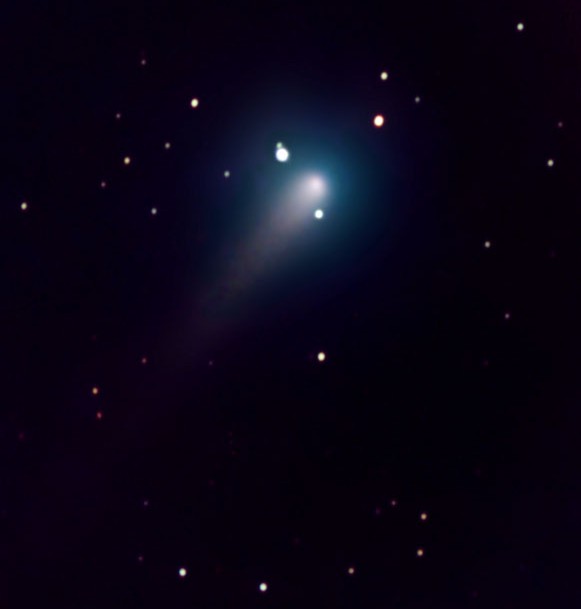
At the time this image was taken, this comet was on its way in to the inner solar system from deep space. Comet C/2002 T7 (LINEAR) did not peak until May. It was expected to become one of two great comets in 2004, along with comet C/2001 Q4 (NEAT), and was predicted to reach naked eye brightness as it approached perihelion near the Sun in April. It did become bright enough to be seen with the naked eye, peaking at 3rd magnitude, but it never quite lived up to its potential. The best view of the comet was accorded to people in the southern hemisphere. On the date of this image, the comet was near the southeast corner star of the Great Square of Pegasus.
This comet was discovered on October 14, 2002 by the LINEAR one-meter telescope in New Mexico. When first discovered, it was a dim magnitude 16.5 and thought to be an asteroid. Later observations quickly revealed its true nature as a long-period comet. At its closest approach to the Sun, the comet passed inside the orbit of Venus.
This image was published by Astronomy Magazine on their web site. It is a composite CCD image taken with an ST-8E and CFW-8 color filter wheel using a 6-inch Takahashi FCT-150 refractor telescope at f7. The image was taken from my backyard in Scottsdale, Arizona.
Constellation: Pisces
RA:00h 21m 26.3s Dec:+16d 40' 47"
February 2, 2004 at 0145 U.T.
Image by Sid Leach
Scottsdale, Arizona
Recent Images.
Complete list of images.
Description of equipment used to acquire images.
Home
Feedback and comments should go to Sid